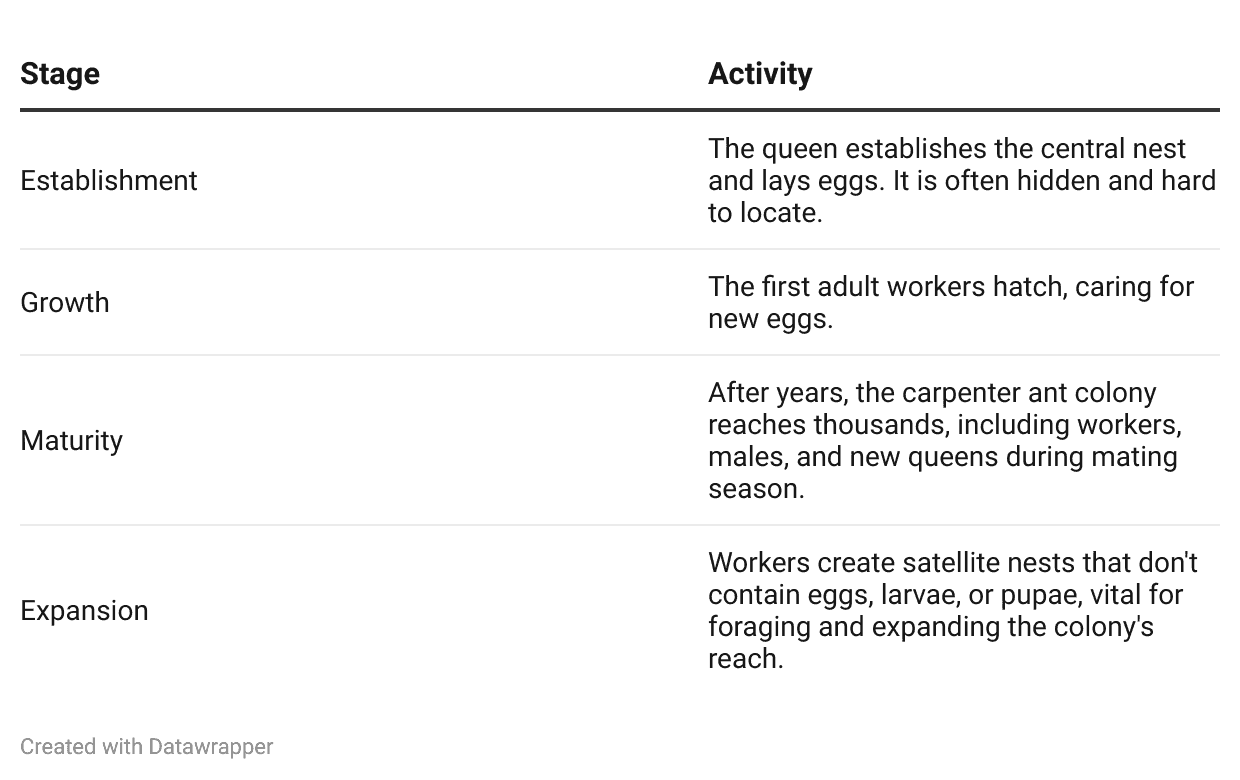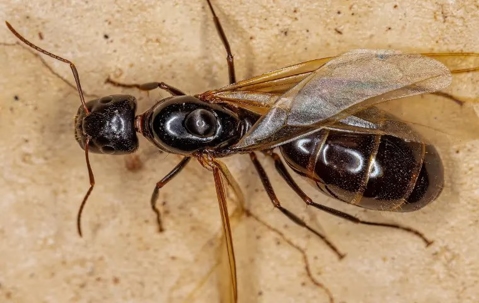Carpenter Ant Queens: Facts, Appearance and Removal
Did you know that the carpenter ant queen is the heart of her colony, with the unique ability to lay thousands of eggs and establish new colonies?
They are the unsung heroes of their colonies, with a unique talent for egg-laying and starting new families, often in the cozy nooks of wooden structures in South Florida.
While they don't munch on wood like termites, their nesting habits can cause structural damage, resulting in headaches for homeowners like you.
Knowing about these insects is more than just bug trivia—it's essential for understanding how to keep your homes safe and sound from these industrious intruders.
Key Takeaways
- Carpenter ant queens are vital for the reproduction and establishment of new colonies.
- The queen ant’s longevity and egg production are vital to colony development.
- Carpenter ant colonies impact natural ecosystems and human structures, necessitating management in the latter.
What to Know About Carpenter Ant Queens
The carpenter ant queen (Camponotus spp.) is central to the survival and expansion of carpenter ant colonies. Their primary functions span from reproduction to colony foundation.
Physical Characteristics
- Size: The queen is the largest ant in the colony, with a notably large abdomen after the thorax to accommodate egg-laying.
- Color: Her exoskeleton ranges in color, typically presenting shades from black to reddish-brown.
- Wings: Possesses wings upon reaching adulthood, which are shed after mating.
Mating and Reproduction
To develop and grow the colony, the queen ant rarely leaves the nest once her colony is established, relying on the workers for sustenance and protection.
- Nuptial Flight: During the warm months, the carpenter ant queen participates in a nuptial flight annually.
- Nesting: Post-mating, the queen searches for a suitable location to establish her nest.
- Egg Laying: Once the nest is established, the queen lays her eggs.
- Sperm Storage: The queen stores sperm in the abdomen for life-long fertilized egg production
- Brood Care: The queen tends to the first brood of eggs herself, which hatch into worker ants.
- Colony Expansion: The worker ants assist in the care of subsequent broods.
Life Cycle
The carpenter ant life cycle undergoes four stages: eggs, larvae, pupae, and adults.
- Mature Females? Potential new queens or workers
- Mature Males? Involved in future mating
Carpenter Ant Colonies
A carpenter ant nest or colony is a dynamic ecosystem with complex social structures and is the habitat of thousands of these swarmers.
Colony Formation
This ant species begins their colonies when a mated queen finds a suitable nesting site, often a piece of damp wood or stumps.
But a new nest can also be found in hollow structures like house walls or insulation, where they excavate tunnels in the wood.
Here’s how the parent colony develops into many satellite colonies:

Diet and Foraging
Carpenter ant colonies have a diverse diet, primarily consisting of proteins and sugars from:
- Insects and other small invertebrates
- Sweet plant secretions
- Food debris from human habitation
The ant workers are responsible for leaving the nest to forage, typically at night.
They use their antennae to track pheromone trails and guide other workers to the food source. They usually travel up to 100 yards from their nest.
Identifying and Controlling Infestations
Detecting a carpenter ant infestation during its early stage is crucial for controlling carpenter ants.
It involves looking for signs of their presence and implementing effective strategies to manage the situation.
Signs of an Infestation
Identifying an infestation begins by looking out for the presence of signs, such as:
- Sawdust-like wood shavings (or frass) are often found beneath wooden items within a property.
- Larvae or mature ants signal an active infestation.
- Faint rustling noises within walls or hollow doors.
Prevention and Control Strategies
Prevention is critical and includes:
- Eliminating sources of moisture to deter nesting.
- Sealing entry points include cracks around doors, windows, and utility lines.
- Keeping firewood and building materials away from the foundation.
Control measures involve:
- Using bait that workers will carry back to the nest, poisoning the colony.
- Applying treatment, such as insecticide and pesticide, around the perimeter of a home to deter ants from entering.
If wood damage is notable, seeking professional pest control services is advised. They can tailor ant control methods to the specific situation, often necessary for severe infestations where DIY strategies fall short.
Frequently Asked Questions
In this section, you will find concise answers to common queries regarding the identification and characteristics of carpenter ant queens.
What exactly happens if the carpenter ant queen kicks the bucket?
Should the carpenter and queen die, the colony typically cannot sustain itself long-term. Without her, the colony fails to produce new ants and will eventually perish.
Is there an effective method to show carpenter ant queens the door?
To control carpenter ant queens, you should locate and destroy their nests. Professional pest control services are usually necessary to accomplish this effectively.
What size are carpenter ant queens compared to the rest of the colony?
Carpenter ant queens are larger than the workers to lay eggs. They measure up to 1 inch long, while workers vary from 1/4 to 1/2 inch.
